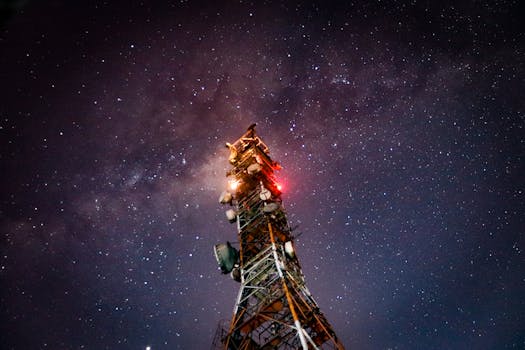
MEO Satellites: Revolutionizing Global Communication with Medium Earth Orbit Technology
MEO satellites, or Medium Earth Orbit satellites, are a type of satellite that operates in an orbit between 2,000 and 36,000 kilometers above the Earth’s surface. This orbit is lower than the Geostationary Orbit (GEO) used by traditional communications satellites, but higher than the Low Earth Orbit (LEO) used by many Earth observation and scientific satellites. MEO satellites are designed to provide a balance between the benefits of GEO and LEO orbits, offering faster and more reliable connections than traditional GEO satellites, while also providing global coverage and reduced latency.
MEO satellites have several advantages over traditional GEO satellites. One of the main benefits is reduced latency, which is the delay between the time data is sent and the time it is received. Because MEO satellites are closer to the Earth, they have a shorter signal path, which reduces latency and makes them ideal for real-time applications such as voice and video communications. Additionally, MEO satellites have a wider field of view than LEO satellites, which means they can cover a larger area of the Earth’s surface and provide more consistent and reliable connections.
How MEO Satellites Work
MEO satellites work by transmitting and receiving signals to and from Earth stations, which are typically located on the ground or in other satellites. The signals are transmitted on a specific frequency, and the satellite uses a transponder to amplify and re-transmit the signal back to Earth. MEO satellites use a variety of frequencies, including C-band, Ku-band, and Ka-band, which offer different levels of bandwidth and signal strength. The choice of frequency depends on the specific application and the requirements of the user.
MEO satellites are typically launched into orbit using a rocket, and once they reach their desired altitude, they use their onboard propulsion system to maneuver into their final position. The satellite then deploys its solar panels and antennas, and begins transmitting and receiving signals. MEO satellites are designed to operate for many years, with some satellites having a lifespan of up to 15 years or more.
Applications of MEO Satellites
MEO satellites have a wide range of applications, including telecommunications, navigation, and Earth observation. One of the main uses of MEO satellites is for telecommunications, where they provide broadband internet, voice, and data services to remote and underserved areas. MEO satellites are also used for navigation, where they provide location information and timing signals to GPS receivers on the ground. Additionally, MEO satellites are used for Earth observation, where they collect data on the Earth’s surface and atmosphere, which is used for weather forecasting, climate monitoring, and other scientific applications.
MEO satellites are also used for a variety of other applications, including search and rescue, where they help to locate and recover people in distress. They are also used for maritime communications, where they provide connectivity to ships and boats at sea. Additionally, MEO satellites are used for aviation communications, where they provide connectivity to aircraft in flight.
Future of MEO Satellites
The future of MEO satellites looks bright, with many new satellites and constellations being launched in the coming years. One of the main trends in the industry is the development of new satellite constellations, which are designed to provide global coverage and high-speed connectivity. These constellations will use advanced technologies such as phased arrays and digital signal processing to provide high-gain and high-throughput communications.
Another trend in the industry is the use of MEO satellites for 5G and other next-generation wireless networks. MEO satellites will play a critical role in providing connectivity to remote and underserved areas, where traditional wireless networks may not be available. Additionally, MEO satellites will be used to provide backup and redundancy for traditional wireless networks, which will help to ensure that critical communications are always available.





